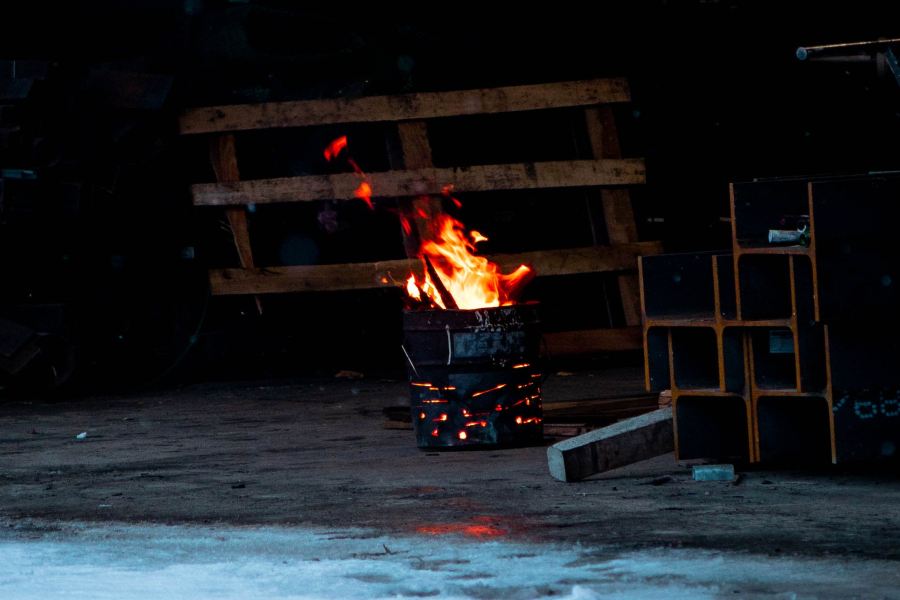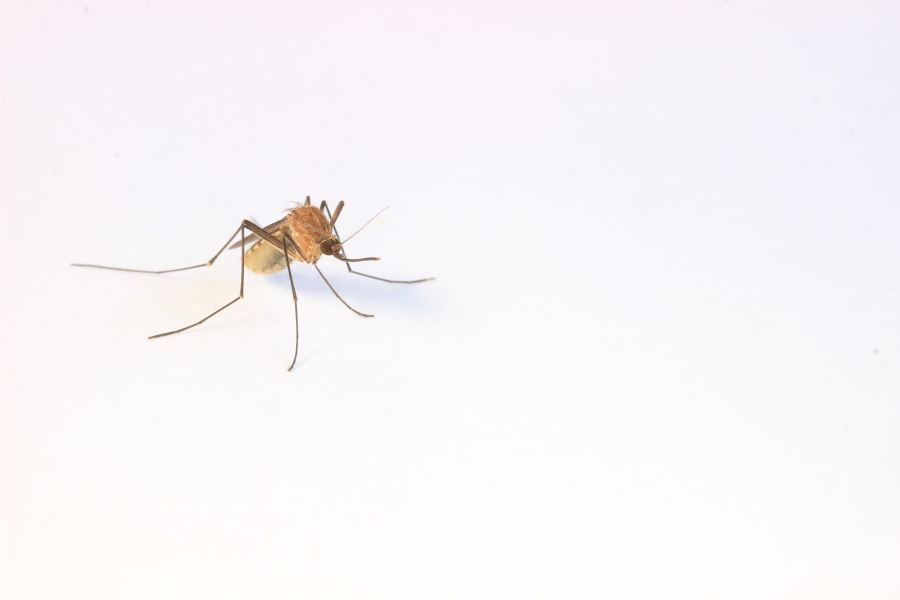Burning waste has long been a common method for disposing of various materials, but traditional burn barrels often produce harmful smoke and emissions. As environmental concerns mount, the need for smokeless burn barrels has become evident. These innovative waste disposal solutions offer a cleaner and more eco-friendly approach to burning debris. In this article, we will delve into the construction, operation, and benefits of smokeless burn barrels, guiding readers on how to create their own smokeless burn barrels to reduce environmental impact and promote sustainable waste management practices.
How To Make A Smokeless Burn Barrel?
- Double Chamber Design: One effective way to create a smokeless burn barrel is by incorporating a double chamber design. This involves constructing an inner chamber, where the primary combustion takes place and an outer chamber that allows pre-heated air to mix with the smoke before it exits the barrel. The additional oxygen provided during this secondary combustion phase helps burn off remaining particulates, reducing smoke emissions.
- Ventilation and Airflow Control: Proper ventilation and airflow control are crucial for smoke reduction. You can install adjustable vents or dampers on the burn barrel to regulate the amount of air entering the combustion chambers. By controlling the oxygen supply, you can optimize the burn process, promoting complete combustion and minimizing smoke production.
- Insulation and Refractory Materials: Insulating the burn barrel with refractory materials like fire bricks or ceramic fiber can help achieve higher temperatures and cleaner burns. These materials retain heat, ensuring a more efficient combustion process, which translates to reduced smoke and particulate emissions.
- Chimney or Flue: Adding a chimney or flue to the smokeless burn barrel helps direct the smoke away from ground level, minimizing the chance of smoke lingering in the immediate surroundings. The height of the chimney should adhere to local regulations to ensure proper dispersion of smoke.
- Preparation of Waste Materials: The type and preparation of waste materials can significantly impact smoke production. Ensure that the materials burned are dry and free of moisture, as damp waste tends to produce more smoke. Sort and separate materials to avoid burning items that release toxic fumes when combusted.
Understanding Smokeless Burn Barrels
Smokeless burn barrels are innovative waste disposal solutions designed to minimize harmful smoke and emissions typically associated with traditional burning methods. These barrels operate on the principle of achieving more complete combustion, thereby reducing the release of particulates and noxious gases into the atmosphere. The primary goal of a smokeless burn barrel is to burn waste cleanly and efficiently, minimizing its impact on the environment and human health.
To understand how smokeless burn barrels work, it’s essential to recognize their core design features. These barrels often consist of two chambers: the primary combustion chamber and the secondary combustion chamber. The waste materials are burned in the primary chamber, where initial combustion occurs. As the smoke and gases rise, they pass into the secondary chamber, where pre-heated air is introduced. The introduction of additional oxygen in the secondary chamber facilitates a second combustion phase, promoting the complete burning of remaining particulates and reducing the production of smoke.
Materials used in constructing smokeless burn barrels play a crucial role in their effectiveness. Insulating materials, such as fire bricks or ceramic fiber, are often utilized to line the combustion chambers. These materials help retain heat, ensuring higher temperatures within the barrel, which leads to more efficient combustion and a cleaner burn. Additionally, ventilation and airflow control mechanisms, like adjustable vents or dampers, are integrated to regulate the air supply during the burn process, further promoting smoke reduction.
Smokeless burn barrels are a safer and more environmentally friendly alternative to traditional open burning practices. They offer communities a means to dispose of waste without contributing to air pollution and associated health risks. By understanding the design principles and materials that contribute to their effectiveness, individuals and communities can make informed decisions to adopt smokeless burn barrels and promote sustainable waste management practices.
Legal Regulations And Permits For Burning Waste
Legal regulations and permits for burning waste vary significantly depending on the country, state, province, or even local municipality. It is crucial to understand and comply with these regulations to avoid potential fines, penalties, or legal consequences. Here are some common considerations related to legal regulations and permits for burning waste:
- Local Regulations: Many areas have specific rules regarding open burning, including restrictions on what materials can be burned, when burning is allowed, and the use of burn barrels or other burning equipment. Local authorities may prohibit burning altogether or allow it only under certain circumstances.
- Air Quality Regulations: Burning waste can release pollutants into the air, contributing to air quality problems. As a result, air quality management districts or environmental agencies may enforce strict regulations on burning activities. These regulations may include limits on the amount and type of waste that can be burned and may require the use of smokeless burn barrels or other advanced technologies.
- Permits and Notifications: Depending on the location and the scale of burning, permits may be required. These permits could be general burning permits for residential use or specific permits for industrial or agricultural burning. In some cases, notifications to the local fire department or environmental agency may also be necessary before starting any burning activity.
- Seasonal Restrictions: Some areas impose seasonal restrictions on burning to prevent wildfires during dry periods or to reduce air pollution during critical times when air quality is already compromised.
- Prohibited Materials: Many jurisdictions prohibit burning certain materials, such as plastics, tires, treated wood, and hazardous waste, due to the toxic fumes they can release when burned.
Maintenance And Upkeep
Maintaining and properly caring for your smokeless burn barrel is essential to ensure its long-term efficiency and effectiveness. Regular maintenance and upkeep will help prevent malfunctions, reduce emissions, and promote safe waste disposal. Here are some key maintenance tasks and upkeep tips for your smokeless burn barrel:
- Regular Cleaning: Clean the burn barrel after each use to remove ash and residue. Use a shovel or designated ash scoop to collect the ashes and dispose of them safely. Cleaning the burn barrel regularly will prevent ash buildup, which can obstruct airflow and reduce the barrel’s efficiency.
- Inspecting Components: Regularly inspect all components of the burn barrel, including the combustion chambers, vents, and chimney. Look for signs of damage, wear, or corrosion. Address any issues promptly to avoid further damage and ensure optimal performance.
- Repairing Damages: If you notice any cracks, leaks, or other damages, repair them as soon as possible. Replace any damaged insulation or refractory materials to maintain proper insulation and heat retention.
- Airflow Control Maintenance: Keep the vents, dampers, and other airflow control mechanisms in good working condition. Lubricate movable parts if necessary and ensure they open and close smoothly.
- Chimney Cleaning: If your smokeless burn barrel has a chimney or flue, inspect and clean it regularly to remove soot and creosote buildup. A clean chimney ensures proper smoke dispersion and reduces the risk of chimney fires.
- Monitoring Efficiency: Pay attention to the burn barrel’s performance during use. Monitor the smoke output and the efficiency of waste combustion. If you notice an increase in smoke or incomplete burning, investigate the cause and make necessary adjustments.
Alternative Smokeless Waste Disposal Methods
While smokeless burn barrels are an effective option for reducing harmful emissions during waste disposal, there are several alternative methods that can further promote sustainable waste management practices. These methods prioritize environmental protection, resource conservation, and minimizing pollution. Here are some alternative smokeless waste disposal methods:
- Composting: Composting is a natural process that converts organic waste, such as food scraps and yard trimmings, into nutrient-rich compost. Composting not only diverts waste from landfills but also produces valuable compost that can be used to enrich soil and support plant growth.
- Recycling: Recycling involves converting waste materials into new products, reducing the need for raw materials, and conserving energy. Separating recyclable materials, such as paper, plastic, glass, and metal, from the general waste stream can significantly reduce landfill waste and decrease greenhouse gas emissions.
- Anaerobic Digestion: Anaerobic digestion is a process that breaks down organic waste in the absence of oxygen, producing biogas (methane and carbon dioxide) and nutrient-rich digestate. Biogas can be used as a renewable energy source, while digestate can be utilized as a soil conditioner.
Final Words
In conclusion, embracing smokeless burn barrels and alternative waste disposal methods empowers us to be responsible stewards of the environment. By reducing harmful emissions and promoting sustainable practices, we can protect our planet for future generations. Let’s strive for a greener future, where mindful waste management becomes a collective commitment towards a healthier and cleaner world. Together, we can make a positive impact on our environment and create a brighter tomorrow.
FAQ’s
What Is A Smokeless Burn Barrel, And How Does It Work?
A smokeless burn barrel is a waste disposal device designed to minimize harmful emissions during burning. It operates with a double chamber design, where waste is burned in the primary chamber, and smoke passes into the secondary chamber for secondary combustion. This process promotes complete burning, reducing smoke and particulate emissions.
Are Smokeless Burn Barrels Legal To Use In All Areas?
The legality of using smokeless burn barrels varies by location. Some areas have specific regulations and may require permits for open burning, while others may ban burning altogether. It’s crucial to check local laws and obtain necessary permits before using a smokeless burn barrel.
What Materials Can Be Burned In A Smokeless Burn Barrel?
Most smokeless burn barrels are designed for burning organic waste, such as yard trimmings and untreated wood. Burning hazardous materials, plastics, or other prohibited substances is typically illegal and harmful to the environment. It’s essential to adhere to the recommended materials for safe and effective use.
How Do I Maintain And Clean A Smokeless Burn Barrel?
Regular maintenance includes cleaning the burn barrel after each use to remove ash and residue, inspecting components for damages, and repairing any issues promptly. It’s also essential to clean the chimney or flue regularly and dispose of ashes safely.
What Are Some Benefits Of Alternative Smokeless Waste Disposal Methods Over Burning?
Alternative methods like composting, recycling, and waste-to-energy facilities offer various advantages, such as reduced greenhouse gas emissions, resource conservation, and the production of valuable by-products like compost and renewable energy. These methods promote a circular economy and minimize environmental impacts compared to burning waste.








